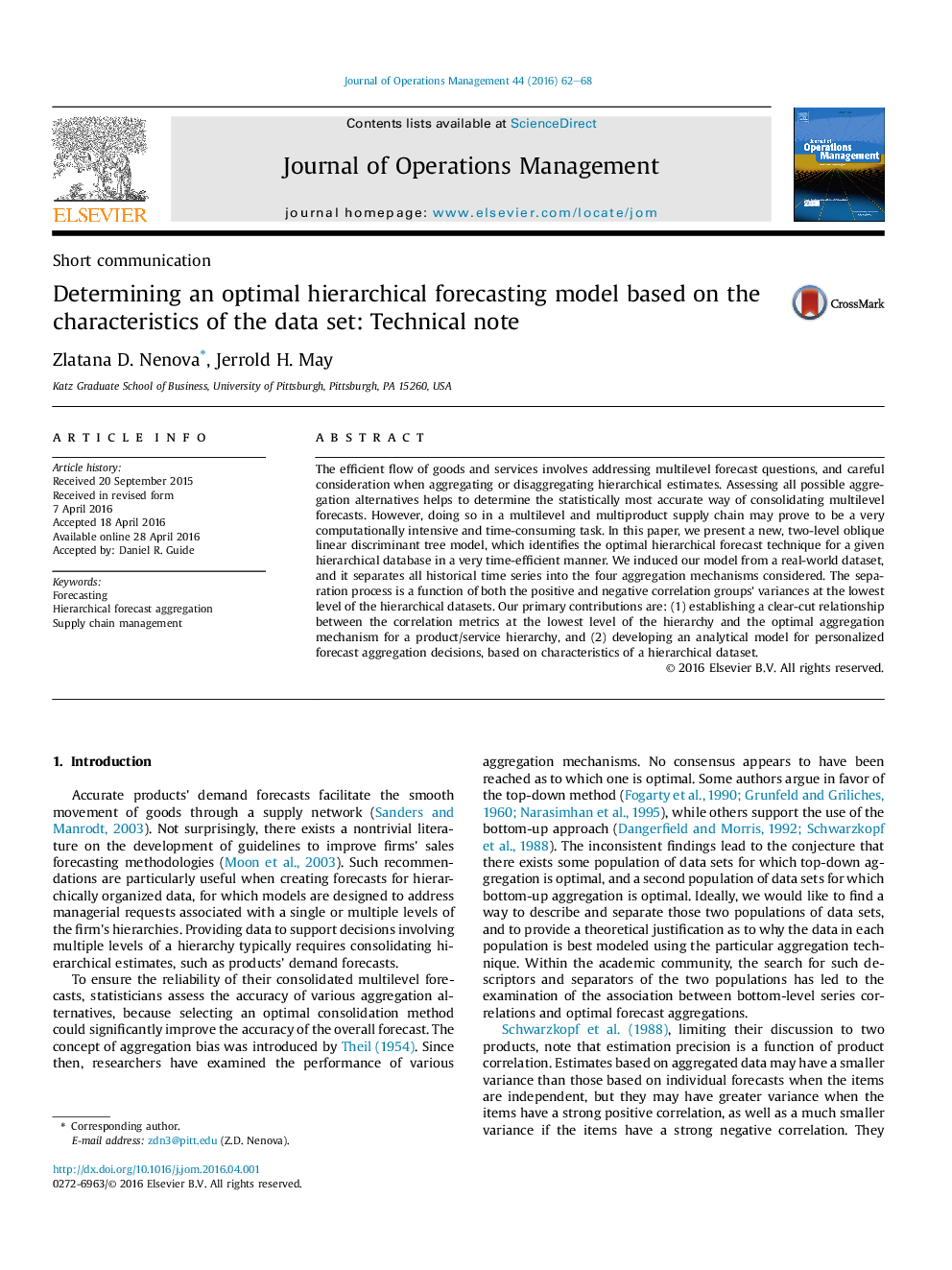| Article ID | Journal | Published Year | Pages | File Type |
|---|---|---|---|---|
| 1031605 | Journal of Operations Management | 2016 | 7 Pages |
The efficient flow of goods and services involves addressing multilevel forecast questions, and careful consideration when aggregating or disaggregating hierarchical estimates. Assessing all possible aggregation alternatives helps to determine the statistically most accurate way of consolidating multilevel forecasts. However, doing so in a multilevel and multiproduct supply chain may prove to be a very computationally intensive and time-consuming task. In this paper, we present a new, two-level oblique linear discriminant tree model, which identifies the optimal hierarchical forecast technique for a given hierarchical database in a very time-efficient manner. We induced our model from a real-world dataset, and it separates all historical time series into the four aggregation mechanisms considered. The separation process is a function of both the positive and negative correlation groups' variances at the lowest level of the hierarchical datasets. Our primary contributions are: (1) establishing a clear-cut relationship between the correlation metrics at the lowest level of the hierarchy and the optimal aggregation mechanism for a product/service hierarchy, and (2) developing an analytical model for personalized forecast aggregation decisions, based on characteristics of a hierarchical dataset.
